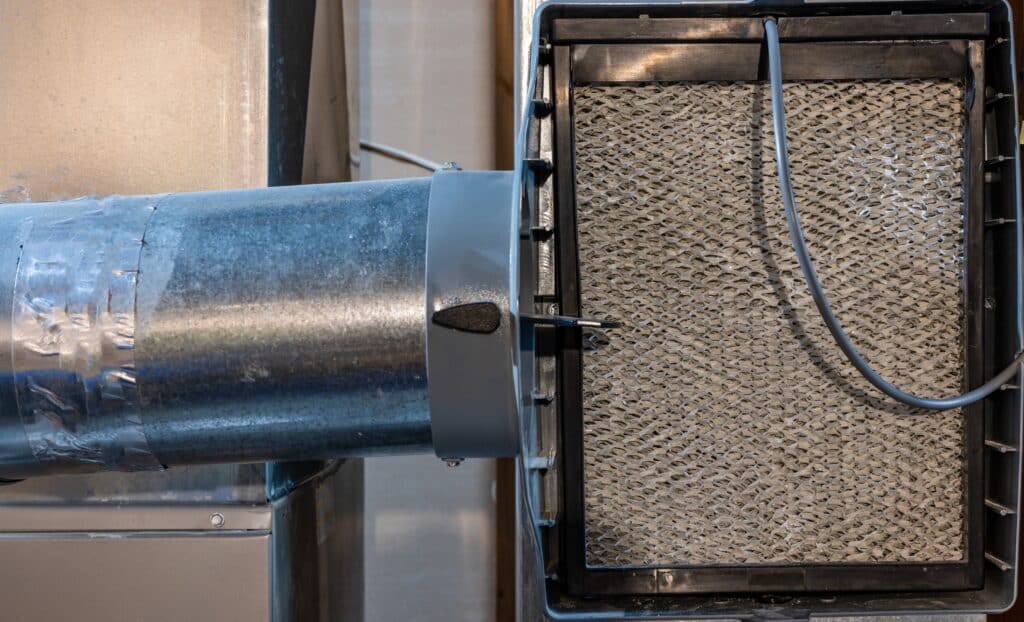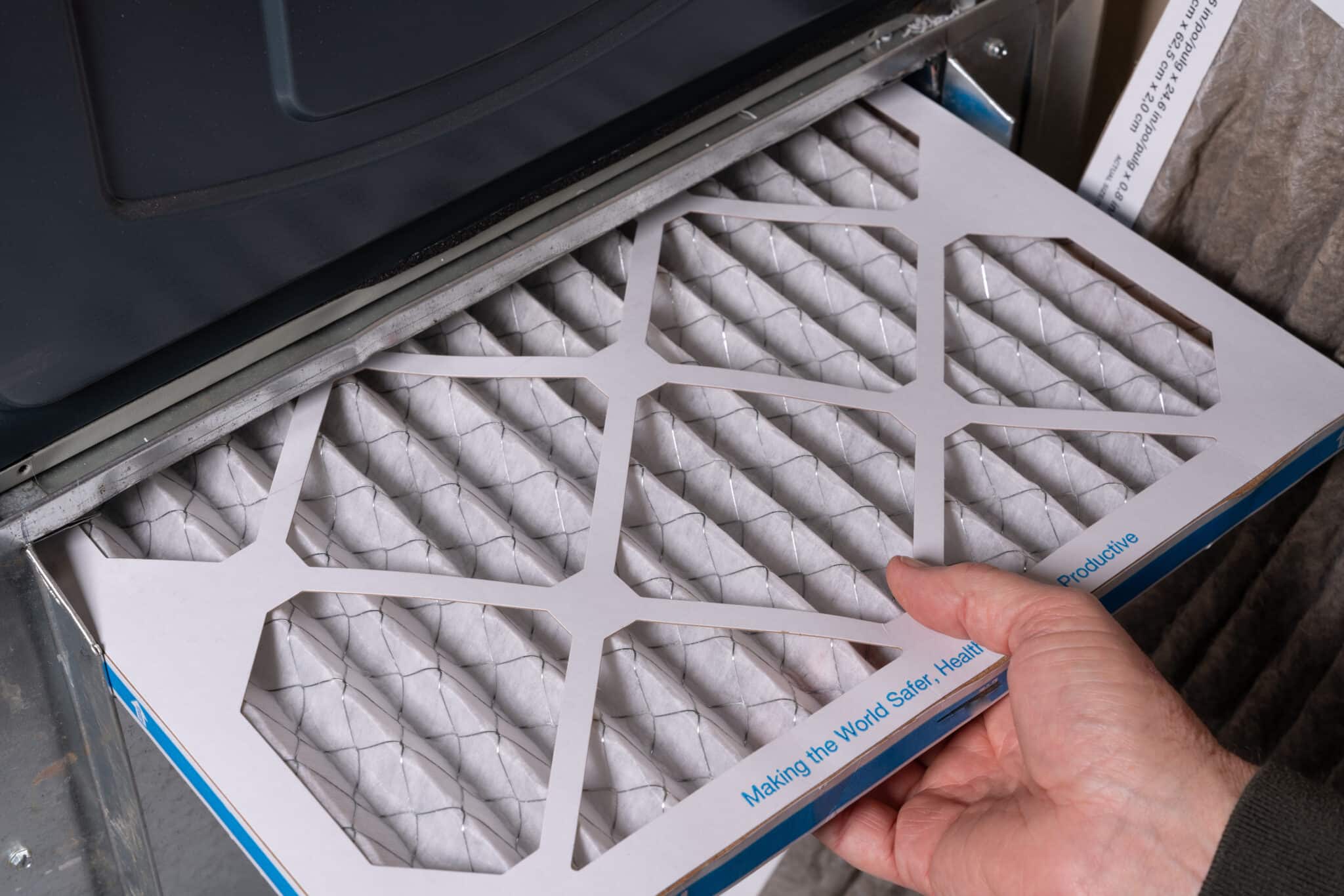
Which Humidifier is Best? Top Choices
North Texas winters bring dry indoor air, leading to irritated sinuses, dry skin, and increased static electricity. A humidifier restores moisture, improving comfort and preventing damage to wood furniture. Balanced humidity also reduces airborne germs, supporting better health during cold and flu season. Whether using a portable or whole-house humidifier, maintaining proper levels enhances indoor air quality and overall well-being.
Why a Humidifier Matters in February for North Texas Homes
February in Allen and Corinth, TX, brings fluctuating temperatures and lower humidity levels, creating dry indoor air that affects comfort and health. A humidifier restores moisture, preventing irritated sinuses, dry skin, and static electricity while improving overall air quality. Balanced humidity also protects wooden furniture, flooring, and musical instruments from cracking due to excessive dryness.
Beyond comfort, a humidifier plays a crucial role in respiratory health, helping those with asthma, allergies, or sinus issues breathe easier. Proper humidity levels reduce airborne particles, minimizing congestion and throat irritation while preventing viruses from spreading. Maintaining indoor humidity between 30-50% creates a healthier home environment for your family.
Choosing the right humidifier depends on your home’s needs. A portable unit offers flexibility for small spaces, while a whole-house humidifier provides consistent moisture throughout your home. By selecting the right model, you ensure long-term benefits, improved comfort, and better indoor air quality all winter long.
Cool Mist vs. Warm Mist: Which One Is Better?
Selecting the right humidifier depends on your specific needs and climate. Both cool mist and warm mist humidifiers improve indoor air quality, but they function differently. Understanding their benefits ensures you choose the best option for your home.
Cool Mist Humidifiers
A cool mist humidifier uses ultrasonic or evaporative technology to disperse moisture into the air without adding heat. These models are energy-efficient, making them ideal for warmer climates or year-round use. They also help reduce static electricity and keep nasal passages hydrated. Because they do not boil water, they are safer for homes with children or pets.
Warm Mist Humidifiers
A warm mist humidifier heats water to release a soothing steam that can kill bacteria and allergens in the air. These models are effective for relieving congestion, making them a great choice during cold and flu season. However, they consume more energy and can pose burn risks if placed within reach of children.
For Allen and Corinth, TX, homeowners, a cool mist humidifier is typically the better choice. It maintains indoor comfort without adding warmth, making it suitable for fluctuating temperatures as winter transitions into spring.
Whole-House vs. Portable Humidifiers: Which Fits Your Needs?
Choosing the right humidifier depends on your home’s size, maintenance preferences, and long-term comfort needs. Both portable and whole-house options help maintain proper humidity levels, but they function differently and serve distinct purposes.
Portable Humidifiers: Flexible and Affordable
A portable humidifier is ideal for bedrooms, nurseries, or home offices, offering a quick and convenient way to add moisture to the air. These units are compact, easy to move, and do not require installation. They help reduce dry skin, congestion, and static electricity.
Despite their convenience, portable models need frequent refilling and regular cleaning to prevent bacteria and mold growth. Their smaller water tanks limit continuous operation, and they only humidify a single room at a time. For homes needing consistent moisture throughout, a larger solution may be more effective.
Whole-House Humidifiers: Long-Term Comfort
A whole-house humidifier integrates with your HVAC system, providing balanced humidity throughout every room. Unlike portable models, these systems connect to the home’s water supply, eliminating the need for frequent refilling. They require professional installation but demand far less maintenance over time.
Whole-home systems improve air quality, protect wooden furniture, and prevent respiratory discomfort caused by dry air. Although they have a higher upfront cost, they offer energy-efficient performance and long-term benefits.
Choosing the Right Humidifier for Your Home
For targeted moisture in small spaces, a portable humidifier is a practical choice. However, for homeowners in Allen and Corinth, TX, a whole-house humidifier is the best option for maintaining year-round comfort with minimal upkeep.
Best Features to Look for in a Humidifier
Selecting the right humidifier improves indoor air quality, prevents dryness, and enhances overall comfort. The best models offer efficiency, convenience, and long-term performance, making them a valuable addition to any home.
-
Adjustable Humidity Control
A quality system should allow precise moisture regulation to maintain ideal indoor conditions. Many advanced models feature built-in sensors that automatically adjust humidity levels, preventing excessive moisture or dryness.
-
Large Water Tank Capacity
The size of the water tank determines how long a unit operates before needing a refill. Larger tanks provide extended runtime, while smaller ones require frequent maintenance but work well for targeted areas.
-
Filtered vs. Filter-Free Design
Some systems use filters to trap impurities, improving air quality. Others rely on ultrasonic or evaporative technology, eliminating filter replacements while still ensuring effective moisture distribution.
-
Smart Controls and Auto Shutoff
Modern options include Wi-Fi connectivity for remote adjustments. Automatic shutoff prevents over-humidification and conserves energy, offering a safer and more efficient experience.
-
Quiet Operation and Energy Efficiency
For bedrooms or nurseries, a low-noise model is essential. Energy-efficient units maintain comfort while reducing electricity usage, making them cost-effective choices.
By considering these key features, homeowners in Allen and Corinth, TX, can choose the best system for improved air quality and long-term home comfort.

How to Maintain Your Humidifier for Long-Lasting Performance
Regular maintenance ensures your humidifier operates efficiently and prevents mold and bacteria buildup. Without proper care, excess moisture and stagnant water can negatively impact air quality, reducing overall effectiveness.
-
Clean the Tank Regularly
Bacteria thrive in damp environments, making frequent cleaning essential. Rinse the tank every few days and disinfect it weekly to prevent harmful contaminants from circulating in your home.
-
Use Distilled or Filtered Water
Tap water contains minerals that cause white dust buildup and clog internal components. Using purified water helps extend the lifespan of your unit and ensures cleaner moisture output.
-
Replace Filters as Recommended
If your system includes a filter, check the manufacturer’s guidelines for replacement intervals. A dirty filter reduces efficiency, circulates allergens, and may decrease air quality instead of improving it.
-
Monitor and Adjust Humidity Levels
Excess moisture can lead to mold growth, while insufficient humidity causes dryness and irritation. Keep indoor levels between 30-50% for optimal comfort and health benefits.
-
Store the Humidifier Properly During Off-Seasons
Before storing, empty the water reservoir, clean all components, and ensure complete drying to prevent mold. Proper storage keeps your humidifier ready for use when needed.
By following these simple steps, you can ensure long-term efficiency, better air quality, and reliable performance throughout every season.
Why Professional Installation Ensures the Best Performance
Installing a humidifier correctly is essential for maximizing efficiency, ensuring long-term durability, and maintaining balanced indoor moisture levels. A professionally installed system prevents common issues like leaks, uneven humidity distribution, and excessive energy consumption.
-
Proper Sizing and Placement
An improperly sized humidifier may fail to maintain the correct humidity level, creating an environment that is either too dry or too damp. Professionals assess your home’s square footage and moisture needs to install the right unit in the most effective location.
-
Seamless HVAC Integration
Whole-house humidifiers work best when properly connected to an HVAC system. Expert installation ensures compatibility, preventing restricted airflow or inefficient moisture distribution that could reduce overall performance.
-
Preventing Leaks and Water Damage
A poorly installed system may develop leaks, leading to costly water damage and mold growth. Certified technicians securely connect water lines, drainage components, and electrical wiring to prevent future issues.
-
Optimizing Energy Efficiency
An incorrectly installed humidifier may use more energy than necessary. Professionals calibrate settings for peak performance, helping maintain balanced humidity levels while reducing electricity costs.
-
Long-Term Reliability and Warranty Protection
A properly installed system experiences fewer malfunctions, extending its lifespan and ensuring it operates efficiently. Many manufacturers require professional installation to keep warranties valid, protecting homeowners from unexpected repair expenses.
Scheduling professional installation guarantees the best results, providing a reliable, energy-efficient humidifier that enhances indoor air quality and home comfort year-round.
Common Humidifier Issues and How to Fix Them
A humidifier improves indoor air quality, but occasional issues can reduce its effectiveness. Identifying common problems and applying simple fixes ensures it operates efficiently year-round.
-
Weak or No Mist Output
If your humidifier is not producing mist, check the water level and refill if needed. Clogged filters or mineral buildup can also block mist flow. Cleaning the unit regularly and using distilled water helps restore proper function.
-
White Dust Accumulation
Tap water contains minerals that create fine white dust, which can settle on furniture and clog internal components. Using filtered or distilled water minimizes dust, and routine cleaning prevents residue from affecting performance.
-
Bad Odors from the Unit
A musty smell usually indicates bacterial or mold growth inside the tank. Emptying and disinfecting the reservoir with a vinegar-water solution removes odors and keeps the unit sanitary.
-
Excess Moisture or Condensation
Too much humidity can lead to condensation on windows and walls, creating a risk of mold growth. Adjusting humidity settings and keeping levels between 30-50% prevents these issues.
-
Unusual Noises During Operation
Gurgling, rattling, or humming sounds may signal trapped air, mineral buildup, or loose components. Ensuring proper assembly and regular maintenance can eliminate most noise-related problems.
With proper care, homeowners in Allen and Corinth, TX, can enjoy cleaner air and consistent performance from their humidifiers throughout the year.
Energy Efficiency: How to Choose an Eco-Friendly Humidifier
Selecting an energy-efficient humidifier improves indoor comfort while reducing electricity and water consumption. The right model helps maintain balanced humidity levels, lowers energy costs, and minimizes environmental impact without sacrificing performance.
Look for an ENERGY STAR® Certified Model
ENERGY STAR®-rated humidifiers consume less power while delivering consistent moisture control. These models are designed for efficiency, helping homeowners lower utility bills while maintaining proper indoor humidity.
Choose the Right Size for Your Home
An oversized unit wastes energy, while an undersized one struggles to maintain ideal moisture levels. Checking manufacturer recommendations ensures the unit fits your space, maximizing efficiency without unnecessary power consumption.
Consider Ultrasonic or Evaporative Technology
Ultrasonic humidifiers use high-frequency vibrations to create mist with minimal electricity. Evaporative models rely on a natural process to disperse moisture, consuming less power than steam-based alternatives. Both options are effective and energy-efficient.
Use Smart Controls and Auto Shutoff
A model with built-in humidity sensors adjusts output automatically, preventing overuse. Keeping indoor humidity between 30-50% ensures the unit runs efficiently. Auto shutoff features prevent wasted energy when the water level is low.
Prioritize Low-Maintenance and Long-Lasting Features
Washable filters, large water tanks, and durable materials enhance efficiency by reducing maintenance and extending the unit’s lifespan. Fewer replacements mean less waste and lower long-term energy use.
By selecting an eco-friendly humidifier, homeowners can improve indoor air quality while conserving resources and lowering utility costs.

Signs You Need a Humidifier Upgrade
Upgrading a humidifier improves efficiency, enhances air quality, and ensures long-term performance. Recognizing the signs of an outdated unit helps maintain comfort while reducing energy costs and maintenance hassles.
-
Uneven Humidity Levels
Rooms may feel excessively dry while others seem damp, indicating poor moisture distribution. An advanced humidifier with smart sensors balances indoor humidity, ensuring consistent comfort throughout the home.
-
Frequent Refilling and Maintenance
Older units require constant refilling due to small water tanks, leading to increased upkeep. Excessive cleaning caused by mineral buildup becomes a hassle over time. Larger-capacity or self-cleaning models reduce the need for frequent maintenance.
-
Increased Allergy or Respiratory Issues
Dry indoor air worsens allergies, asthma, and sinus discomfort, making breathing difficult. A system that fails to maintain proper moisture levels may no longer be effective. Newer humidifiers with improved filtration enhance air quality and support respiratory health.
-
Higher Energy Consumption
Rising electricity bills without noticeable humidity improvements suggest an inefficient system. Units consuming excessive power while failing to regulate moisture effectively need replacing. Energy-efficient models reduce power usage while maintaining ideal indoor conditions.
-
Noisy Operation or Malfunctions
Loud rattling, humming, or inconsistent mist output signals mechanical issues. Frequent shutdowns and performance disruptions indicate a system is near the end of its lifespan. A modern, quieter unit ensures reliable operation and improved efficiency.
-
Outdated Features and Limited Controls
Older models lack humidity sensors, programmable settings, and remote operation, making them less convenient. Smart humidifiers provide automated control, better efficiency, and user-friendly adjustments.
Upgrading ensures better performance, improved comfort, and lower maintenance, making it a smart investment for a healthier home environment.
Conclusion: The Best Humidifier for Your Home
Choosing the right humidifier improves indoor air quality, enhances comfort, and prevents damage caused by dry air. Selecting the best system depends on factors like home size, humidity needs, and efficiency features.
Whole-house systems provide consistent moisture levels with minimal maintenance, making them ideal for large spaces. Portable models offer flexibility but require frequent refilling and cleaning. Features such as adjustable humidity settings, automatic shutoff, and energy-efficient operation improve performance and convenience.
Proper installation ensures maximum efficiency and prevents issues like excessive moisture or uneven distribution. A professionally installed system integrates seamlessly with an HVAC unit, reducing long-term maintenance and energy costs while maintaining balanced humidity.
For expert advice, One Hour Air Conditioning & Heating of Dallas provides tailored solutions to help homeowners select the most efficient option. Whether upgrading an outdated model or installing a new system, skilled technicians ensure seamless operation and long-term performance.
Residents in Allen and Corinth, TX, can schedule a consultation to find the best humidifier for their needs. Contact One Hour Air Conditioning & Heating of Dallas today for expert recommendations and high-quality installation services.
FAQs
-
What is the best type of humidifier for home use?
The ideal humidifier depends on your needs. Cool mist models work well in warm climates and are energy-efficient. Warm mist options provide soothing relief and help reduce bacteria. Portable units are great for small rooms, while whole-house systems maintain consistent moisture throughout larger homes.
-
Should I choose a whole-house humidifier or a portable one?
A whole-house humidifier integrates with your HVAC system, providing balanced humidity with minimal maintenance. Portable humidifiers offer flexibility but require frequent refilling and cleaning. Whole-house systems are best for long-term efficiency, while portable units suit targeted spaces.
-
How do I select an energy-efficient humidifier?
Choosing an ENERGY STAR®-certified humidifier ensures lower electricity consumption. Ultrasonic and evaporative models are more efficient than steam-based units. Features like auto shutoff, adjustable humidity controls, and smart sensors help conserve energy.
-
What features should I consider when buying a humidifier?
Look for adjustable humidity settings, large water tanks, quiet operation, and auto shutoff. Smart models with Wi-Fi connectivity provide remote control, and filter-free options require less maintenance.
-
When should I replace my humidifier?
If your humidifier struggles to maintain moisture, makes excessive noise, or increases energy costs, consider upgrading to a more efficient model with modern features.
Choosing the right humidifier improves comfort and air quality. One Hour Air Conditioning & Heating of Dallas offers expert installation and guidance. Contact us today to find the best system for your home and ensure year-round humidity control.






